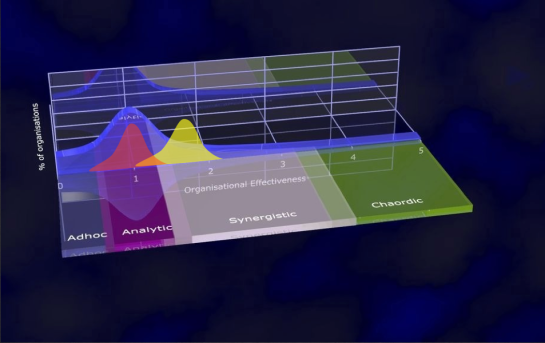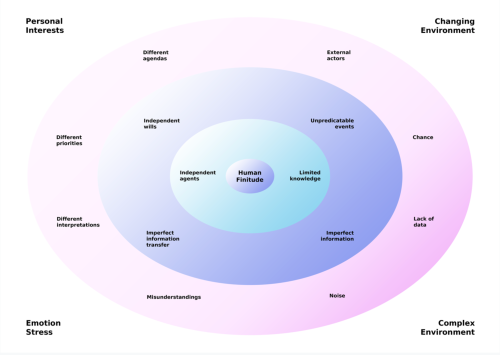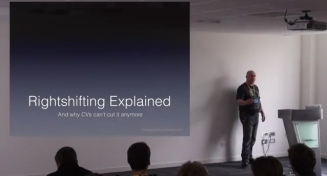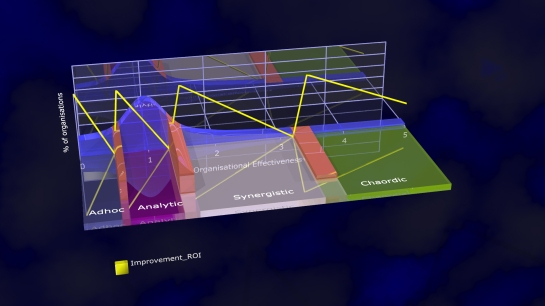Rightshifting Recruitment
[From the Archive: Originally posted at Amplify.com Apr 19, 2011]
Introduction
I don’t think that anyone (excepting maybe those with vested interests) would dispute that recruitment in the knowledge-worker space is very broken. I have recently tweeted about how traditional CVs are a key element of the dysfunctional recruiting landscape, and how we would all be much better off without them (see the #NoCV hashtag).
Some folks have responded by asking, almost despairingly, “how else could organisations look to hire new people?” Hw might they:
- Filter out the few most relevant applications from the fire hose of applications they receive and
- Support the evaluation of filtered candidates at e.g. interview time.
Setting aside issue 2. for the time being (FWIW, I hold that interviews are almost as broken an element of the recruitment process as are CVs), let’s consider how organisations might become significantly more effective at tackling issue 1. namely, filtering applications.
Deming’s 95/5 Rule
W Edwards Deming, American father of the Japanese post-war economic “miracle”, wrote that “a bad system will defeat a good person every time”. He pointed out that when people work for an organisation, some 95% of their productivity is a product of the system within which they work, and only some 5% of a individual’s productivity is down to their own skills, talent, effort, etc.
If we choose to believe this, then the achievements, etc., found on folks’ CVs are likely 95% due to the system at their previous employers, and only 5% due to their own skills, talent, etc. in those previous positions.
Mindsets are Key
I titled this post “Rightshifting Recruitment” as Rightshifting (specifically, the Marshall Model) offers a different perspective, and a way forward, out of the CV trap, towards a better, more effective #NoCV recruitment process.
If we choose to accept the Marshall Model (which posits that Mindset is the key determinant of organisational effectiveness) combined with the observations re: Deming’s 95/5 rule, then organisations should NOT be recruiting primarily on the basis of applicants (claimed) skills and talent, but rather on the basis of mindset “fit”. I.E. We should match the mindset of each applicant against the prevailing (or target, if different) collective mindset of the hiring organisation, and filter those applicants that have an acceptable “range of fit”.
Range of Fit
Although hiring organisations will have a single “Rightshifting Index” (position on the horizontal “effectiveness” axis), each applicant will have a range of mindsets (a distribution along the horizontal axis) within which they will likely be effective. Organisations looking to maintain the status quo (a given Rightshifting Index value) may value applicants that match that Rightshifting Index value closely. However, organisations looking to continually improve, or maybe even transition to a more effective mindset (i.e. significantly shift to the right) may more value applicants that can span the range from the organisation’s present Rightshifting Index value all the way over to the target Rightshifting Index value. Put another way, applicants that have seen “the Undiscovered Country” will be at a premium – for such organisations contemplating, or already embarked upon, such a journey.

Example (see graphic, above): An organisation presently at or around “1” on the RIghtshifting axis may be seeking to Rightshift to i.e. “1.8” (this is typical of organisations “going Agile”). Recruiting for fit against the red curve will result in new hires who actively oppose this Rightshift aspiration. Better to seek new hires who fit in the yellow curve, as they are much more likely to actively assist the Rightshift / transformation.
Practicalities
We already have the means to assess the current and target “Rightshifting Indices” (positions on the horizontal “effectiveness” axis) for a given organisation. A simple (5 minute, multiple-choice) questionnaire can serve to assess the relative spread of the mindset(s) that a given applicant can span. Overlaying the two can then immediately show the relative “fit” for each applicant.
Zappos
Some outstanding organisations, like Zappos, have already discovered the importance of selecting new hires on “fit”, (Zappos famously offers new hires a $3000 “quitting bonus” to leave the organisation if the new hire feels they’re not a good “fit” at the end of each of their first four weeks).
Conclusion
Using CVs to filter suitable candidates just does not work at all well (does not find the most suitable applicants to go forward in the hiring process), for knowledge-work businesses. By selecting on mindset “fit”, knowledge-work businesses have a much better chance of selecting applicants that will be truly productive within the business’ prevailing (or target) collective mindset.
– Bob
Further Reading
“Why Good People Can’t Get Jobs” ~ Online article by Dr. Peter Cappelli
“Bad Hires Have Cost Zappos Over $100 Million” ~ Tony Hsieh
Postscript
This topic was the theme for my Magrails 11 presentation in October 2011:
Video of Magrails11 presentation










